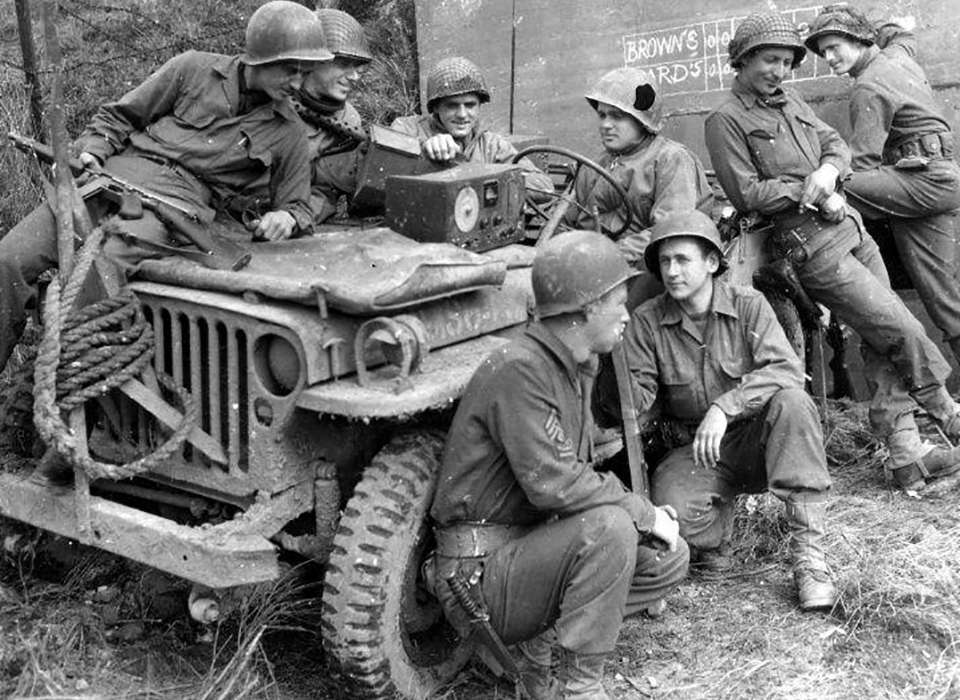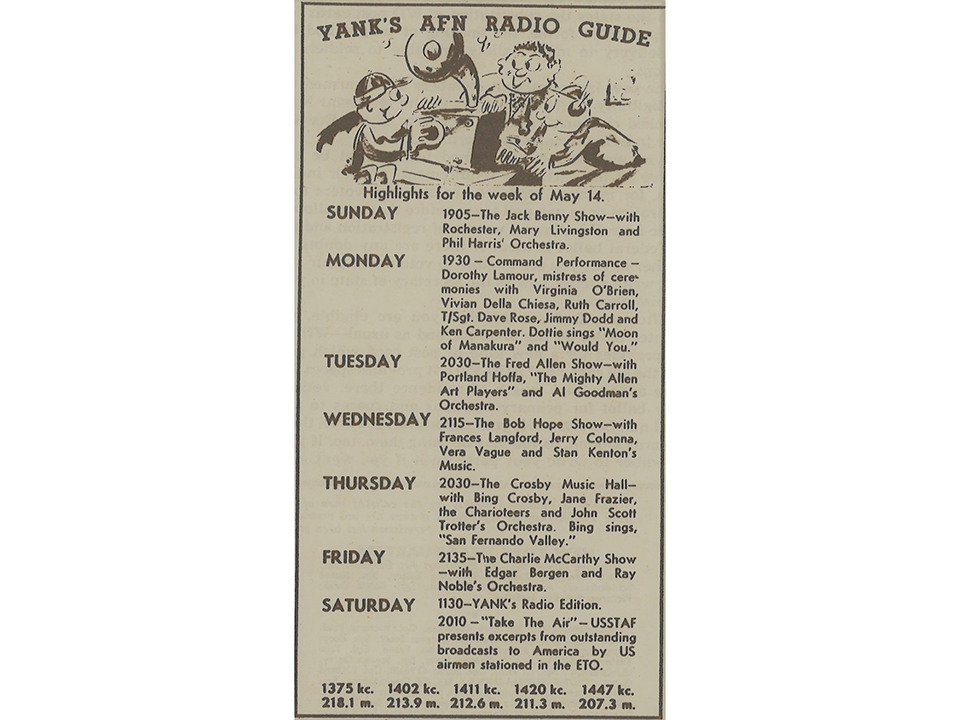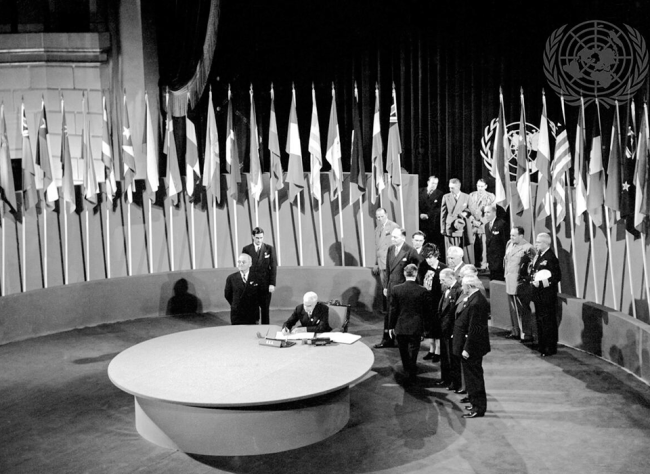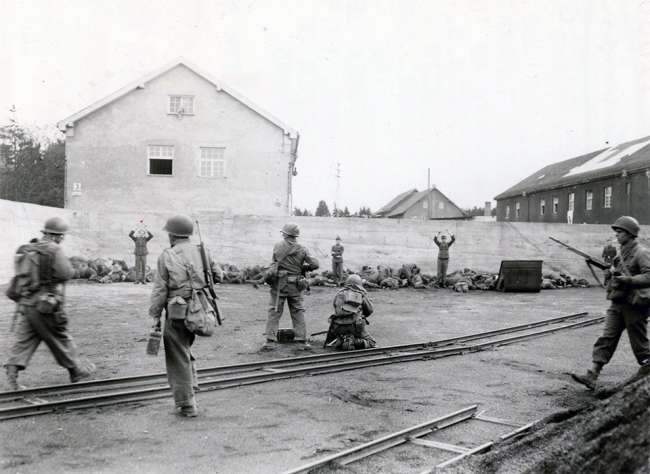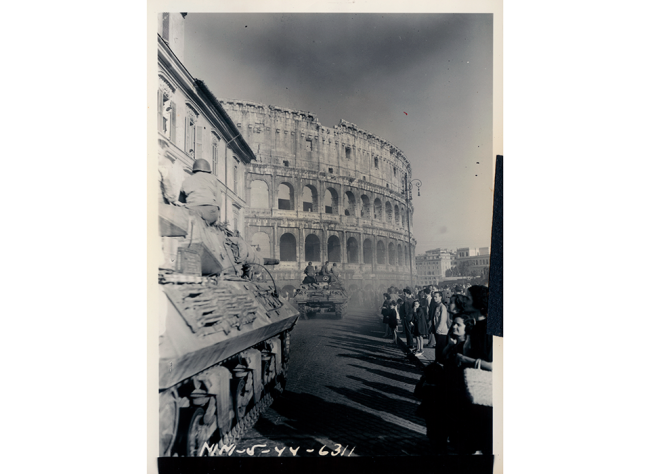The American Forces Network (AFN) was more than a radio service. Since 1943 the “bringer of music” functioned as a morale booster and sonic bridge between cultures. Its role often goes unnoticed these days. Maybe because we forget the importance radio had in general, or maybe it’s because the fleeting and serendipitous nature of the medium is overshadowed by iconic moments in radio history.
Entertainment and news for US troops arriving in the British Isles was certainly not at the top of the list of the military command in 1943 either. The infrastructure to win a war had to be set up, and interactions with British hosts were not always easy. But for many GIs, loneliness and homesickness were palpable.
They turned to radio listening, just as they would back at home in the United States. But the British Broadcasting Corporation's (BBC) programming was simply bland to the American ear. Music was, by comparison, too sparse and dull, the humor too alien and the announcers too stiff. This caused concern: entertainment for the little leisure time they had should relieve the inevitable tension and not intensify the feeling of solitude and homesickness.
The idea of some sort of radio network for American GIs was first put on the table at a meeting in early 1943 between General George C. Marshall and General Dwight D. Eisenhower, realizing the dire need to boost morale. However, the BBC had a monopoly on the British airwaves, and their unwillingness to give up control led to months of discussions and failed experiments by the Office of War Information (OWI) and the War Department, as well as the new Armed Forces Radio Service (AFRS) in California.
After the BBC finally caved, Eisenhower’s Chief of Staff, Lieutenant General Jacob Devers, ordered a young captain to set up AFN. John S. Hayes had been a broadcaster in civilian life and seemed to be the best man for the job. Captain Hayes began a lengthy search through military personnel records to find suitable men for the job. The team he came up with consisted of four officers and 13 enlisted men. The small team set up transmitters, outfitted their studio, and created a programming plan.
AFN had three objectives: To broadcast American entertainment, to cooperate with training, educational and religious projects of the Army, and to assist the American soldier and sailor in adjusting to his new environment. Crucially…many of the hosts would be soldiers already in uniform.
Finally, it was 5:45 p.m. July 4, 1943, and AFN went on the air with "The Star-Spangled Banner."
To great success almost immediately: seven transmitters broadcast the programs, but it expanded so rapidly that within a year AFN could be heard far and wide with the help of over 50 additional transmitters across Great Britain. The broadcast day expanded to 19 hours during the next months and six more soldiers joined the original staff of on-air hosts and technicians.
AFN’s broadcasting schedule was straightforward. A large amount of the content was provided by the Armed Forces Radio Service. The AFRS had been established in spring of 1942 as a worldwide radio service to give the military listeners the news from home, along with top notch entertainment by recording their own shows as well as transferring appealing programs from other commercial stations. The amount of radio program "transcription" recordings pressed monthly for AFRS was 7,891 by January 1943, and increased to 117,695 by October 1945. Transcriptions were prepared commercial free for AFN. Instead, AFN aired public service announcements that included a variety of advice and calls to action, such as buying war bonds, sending V-Mail, maintaining cleanliness, and so on. Among AFRS’ earliest and most popular shows was Command Performance. Virtually all the big names of radio and film appeared at least once in this production, which ran until the end of the War. The concept was simple enough: the servicemen could request what and who they’d want to hear—requests that were then transformed into a variety show. Famous personalities donated their talents each week, including Hollywood A-List performers like Bob Hope, Frank Sinatra, Ginger Rogers, Gary Cooper, etc...
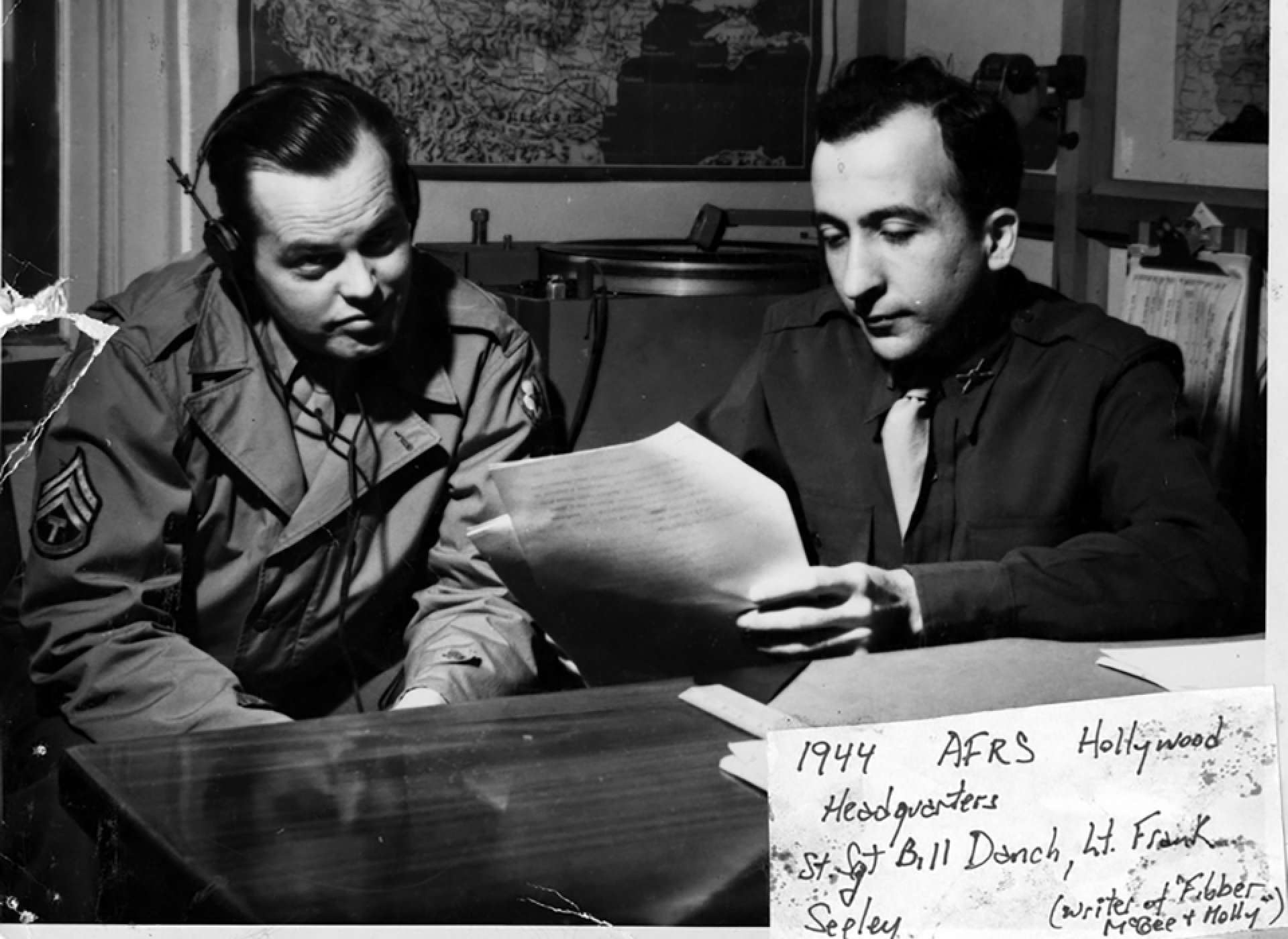
Staff Sergeant Bill Danch (left) and Lieutenant Frank Seeley at the Armed Forces Radio Service's Hollywood, California headquarters. Image courtesy of the Harry S. Truman Library & Museum, Accession Number 2013-2956.
Check out this episode of Command Performance from May 1944 which includes a great version of "Up a Lazy River" by Louis Armstrong. And here is the Army-Navy Screen Magazine video which is a collection of clips of Bob Hope hosting Command Performance with guests Lana Turner, Betty Hutton, and Judy Garland.
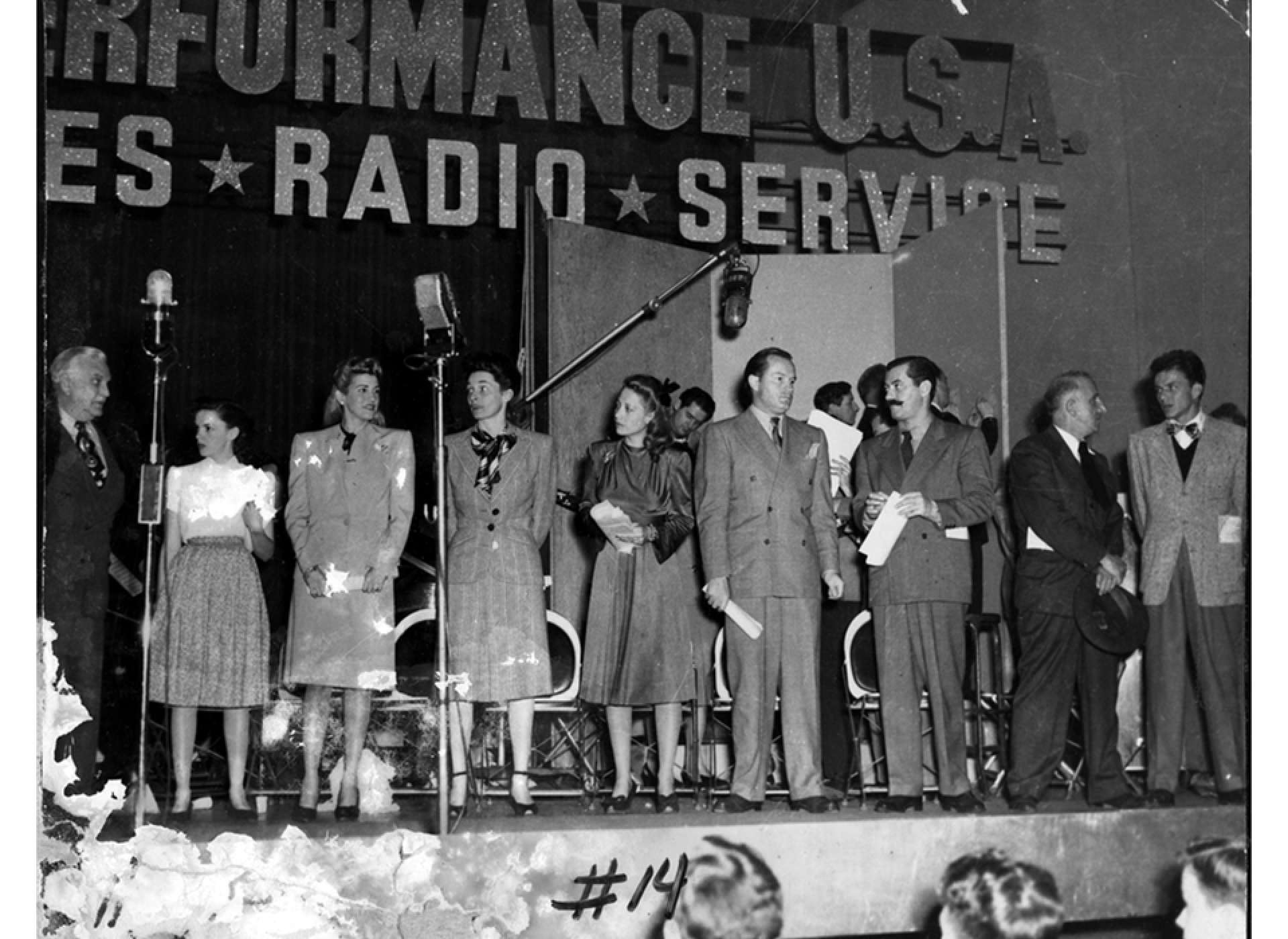
Performers on stage for a live performance recording for the Armed Forces Radio Service. Image courtesy of the Harry S. Truman Library & Museum, Accession Number 2013-3017.
Music was the emphasis of GI Jive with the soldiers’ favorite, GI Jane. She was the on-air persona of Martha Wilkerson, hosting a DJ music program playing the most popular records. It is said to have had the biggest impact on the troops’ morale with a young woman who presented a simple, yet successful formula: a collection of record requests, some cheerful banter, and occasional interviews with celebrities. Here’s a link to an episode from 1944 with GI Jane’s typical introduction.
The Jubilee Program (1942-53) was distinctive and innovative in many ways. It was directed toward African American soldiers and included some of the best wartime live-jazz performances. Jubilee featured the genius of greats like Lena Horne, Duke Ellington, and Count Basie. The stage MC was the jovial Ernie “Bubbles’ Whitman whose jazzy jive-talk made the show popular with a wide range of listeners, crossing cultural and national borders with its devoted military and civilian audiences. You can hear Ernie “Bubbles’ Whitman introduce Duke Ellington and a whole show from March 1944 here.
AFRS was churning out an astounding amount of shows of great quality. But it was not only the pre-produced programs from Hollywood that were aired and were successful with the GI listener base. The most popular of the local shows produced in England was Duffle Bag with the DJ Johnny Kerr. The 26-year-old from Ohio had radio experience and was found peeling potatoes as a private at an Army Camp when Hayes was looking for people to work at his new network. In a poll of US Army troops on their favorite radio shows, Duffle Bag was number one. The daily two-hour show received over 200 fan mail music requests each week!
All in all, AFN was a huge success. American soldiers loved their own network as an audible link to home. For a moment, their business of carrying on the war could be pushed into the background. British listeners appreciated the station, too. Older listeners were reminded of the eclectic and innovative Radio Luxembourg of the past, younger listeners loved AFN for the music and the relaxed style it presented. In fact, AFN is known to have sparked the love for music in none other than the likes of youthful Van Morrison, Robert Plant, and many of their contemporaries.
With the preparations for the invasion of Europe came the question of combined broadcasting for the Allied troops. General Eisenhower was concerned that the Allied forces display unity. A joint radio format was envisioned as a cooperation between the AFN and the British and Canadian Broadcasting Corporations. The proposed “Allied Expeditionary Forces Program” (AEFP) was by no means an easy endeavor and never surpassed AFN in its success.
AFN didn’t stop broadcasting during AEFP’s existence. It, too, had been gearing up for D-Day. Mobile broadcast vans were prepared, and their operators briefed and trained to accompany the troops across the Channel. The plan was for AFN to have one mobile station with each of the US armies in the field. When the actual invasion began, AFN programs were beamed to battlefronts via long-wave transmitters from the BBC, and then re-transmitted by mobile vans that were attached to the various units. They reported activities on front line and fed the news reports back to headquarters in London.
Broadcasting from the moving front came with its perils, and bombings were a daily occurrence. The Seventh Army mobile unit was strafed regularly and Sgt. Jim McNally became AFN's first fatality when he was killed operating a unit. Shortly thereafter, Sgt. Pete Parris, an AFN news correspondent, was killed while accompanying a paratrooper unit into France.
With their mobile units, AFN touted itself as “On the road to Berlin,” and several mobile units eventually would be used to help establish the AFN network in Germany, Italy, and Austria. Once ‘in Berlin,' AFN had its part to play by providing information and entertainment for the now occupying forces. The final goal remained the same: “To Bring Yank Radio to Yanks in Europe.” It was here that AFN would develop the greatest dynamic that would affect even more listeners.
AFN Munich was the network’s first station in Germany. It was founded in early June 1945 from a mobile unit attached to the Seventh Army. The house had been used by Nazi Gauleiter Adolf Wagner, who had a radio station and link to a transmitter installed in order to broadcast air raid warnings. Since neither the house nor the broadcast system had suffered major damage, it was a perfect setup for AFN to start operation in 1945—albeit with a famous blunder:
Station Commander, Major Bob Light, signed the station on air with the words, “Good Morning, this is AFN Munich, The Voice of the Seventh Army.” He didn’t know at the time that Patton’s Third Army had taken control of Bavaria that his mistake was heard by General Patton himself—while shaving. He is reported to having lost control of both his temper and his straight razor when he heard Major Light’s mistake. With blood on his face from the razor gone astray, he is said to have shouted that he wanted “that announcer court-martialed."
Bumpy beginnings aside, AFN Munich was a huge success, and produced many memorable radio shows including Luncheon in Munchen and Bouncing in Bavaria. In addition, AFN Munich is famous for its historic news reporting from the Nuremberg Trials from November 1945 to early October 1946.
AFN Frankfurt was set up only shortly after AFN Munich and began its operation in July 1945 from a confiscated home in the city. Once the station was made AFN headquarters in 1946, it moved to “romantic Hoechst,” outside of Frankfurt. The castle quickly became the most remembered and well-loved location AFN ever had, from which they aired the country music show Stickbuddy Jamboree, among others.
AFN quickly expanded in Germany with stations in Stuttgart, Bremen (soon after to become AFN Bremerhaven), and Nuremberg amongst others. In 1947, Radio Annual reported that AFN was “still building morale” and explained to the folks stateside the importance of AFN for the men serving overseas.
In the years following the end of the war, the shows AFN broadcast changed, too. They aired less and less made-for-troops shows from AFRS. Instead, local programming hosted by GIs with news and music got more airtime, along with shows rebroadcast from commercial stations. Thanks to these transcriptions, popular American disc jockeys like Charlie Tuna, Roger Carroll, Casey Kasem, and Wolfman Jack later were also heard on the other side of the Atlantic.
In typical American broadcasting style, AFN’s local stations aired a combination of “network time” (all local transmitters broadcasting the same program), and “local option time” (unit hosts and producers broadcast their own programs specifically geared towards the local audience). In some cases, these local soldier DJs , who created their own program and presented pop music, country, blues, swing, and jazz to the listeners, became local celebrities. George Hudak from AFN Berlin is a classic example whose live shows from public places in Berlin were attended by thousands of listeners, American and German alike.
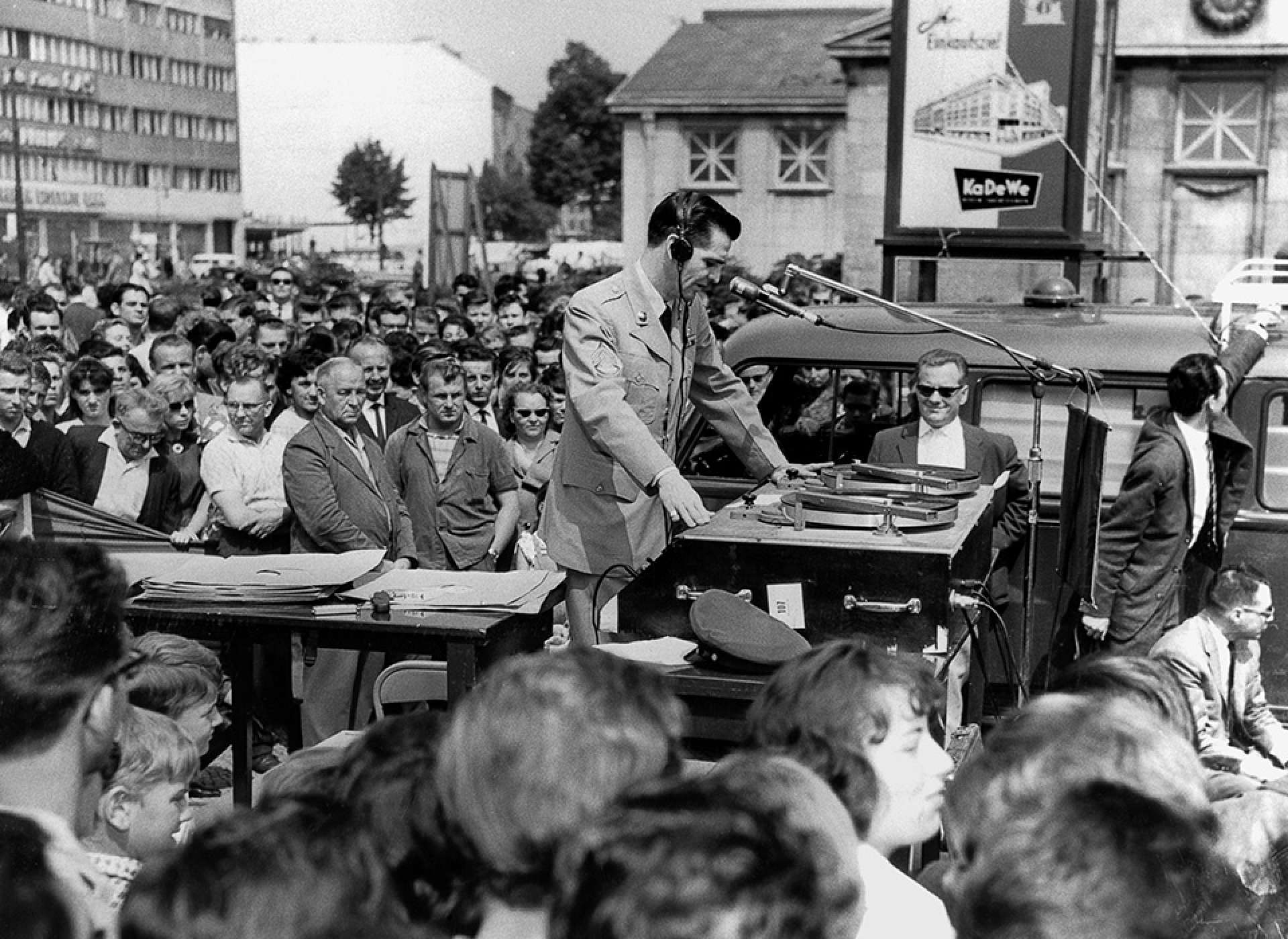
Live show of the hugely popular “Frolic at Five” with George Hudak, Wittenbergplatz Berlin. Image Courtesy of AlliiertenMuseum Berlin/US Army.
AFN Berlin had been set up within 17 days, starting on July 17, 1945, when several GIs arrived on a jeep with orders to establish a radio station. Soon two 2-ton trucks with a mobile unit arrived, parking next to their future home. A 250-watt transmitter provided radio service within only a two-mile radius. Eventually, the station soon moved into the confiscated private 27-room mansion on Podbielski Allee 28 in the exclusive Dahlem section of the city. The mansion had belonged to the Nazi Foreign Minister, Joachim von Ribbentrop, who was executed following the Nuremberg war trials.
AFN Berlin, like the city, was at the center of many crises. During the bleak days of the Berlin airlift, AFN Berlin’s 24-hour broadcast was not only vital for pilots, who used the signal to maneuver their planes, it was also an audible lifeline to Berliners, symbolizing the American presence in and commitment to the city. When it went off-the-air for several minutes at one point, the switchboard was deluged with calls from worried Berliners concerned that the Americans were pulling out. In 1962, AFN Berlin went 24-hours on a permanent basis as a direct result of keeping the Soviets from airing on the same frequency in English, and with some similar music, but with anti-American and pro-Communist propaganda during the late evening hours.
AFN was intended for GIs alone, but soon many others tuned in across a divided Germany and all over Europe. The network of stations was considered the “best ambassador for the United States in the post-war era," and lauded as a “radio station from another planet,” with music that people wanted to hear presented in a different kind of way. Especially for young Germans, the difference to what they were exposed to before couldn’t have been greater. They were used to the Nazi announcers barking out words as if they were commands, whereas AFN “chatted” to them like friends.
It seemed like a way to experience the ‘real’ America that so quickly had become the land of dreams and plenty. Taking part in that world through the radio offered a way for the young Germans to escape post-war Germany every day.
This “shadow” audience of Europeans throughout the years was officially incidental to the station’s primary purpose to entertain the GI, but its popularity with the German audience could not be denied. Billboard, the entertainment industry magazine, published an article on the occasion of AFN’s 15th birthday noting: “In practice this enforced anonymity of the part of the 50 million AFN continental fans creates no bar to their enjoyment of the network. What the GIs want is music, and this is what the 50 million Europeans also want.” In many ways AFN was the best unintended ambassador for the “American Way of Life” in postwar Europe.
AFN was at the height of its popularity and importance in the 1950s and 60s. The stations remained vital and adapted to the times, as did AFRS, soon to be renamed AFRTS, including television programming. The American Forces Network Europe (AFNE) still exists with the current headquarters in Sembach, Germany, however, in different form and capacity than during the War and post-war era. Some of AFN’s second and later third generation of vaunted and influential former soldier DJs and hosts remained in Europe after their service during and after the Cold War. Some became popular, local figures on the new format commercial music stations across Germany influenced by AFN. Broadcasting, usually in German, some of these “Amis” are on the air to this day!
Tanja B. Spitzer
Tanja B. Spitzer, a native of Germany who came to New Orleans a little over a decade ago to study at Tulane University, is an expert on transatlantic history and cultural diplomacy.
Cite this article:
MLA Citation:
APA Citation:
Chicago Style Citation:
